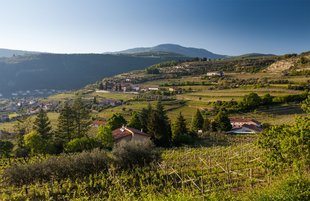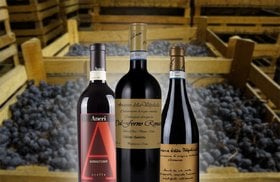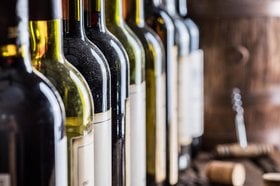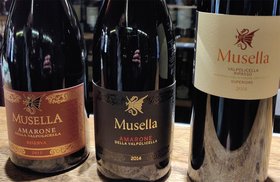Amarone Della Valpolicella: 10 Best Wines, Prices, Winemaking
Amarone Della Valpolicella wine, or Amarone, is a rich, dry Italian red wine made from a blend of Corvina, Rondinella, and Corvinone grapes in the Veneto region of Italy.
This dry red wine is made using the appassimento process using partially dried-out grapes - a technique typically used to make sweet white wine.
Amarone directly translates to “the Great Bitter,” which was used to distinguish it from the Recioto della Valpolicella wine produced in the same region.
This dry red wine is also one of those scarce collectibles that ages beautifully for decades! Find out everything about Amarone Della Valpolicella - the different styles, a handpicked list of 10 unique Amarone wines you could add to your red wine collection, the winemaking techniques, what makes it so expensive, and more.
Further reading
- Explore the Italian Wine Regions and the finest wines you can buy in 2023.
- Check out these exotic Valpolicella Wines to add to your wine collection now.
Amarone and Valpolicella Wine Classification
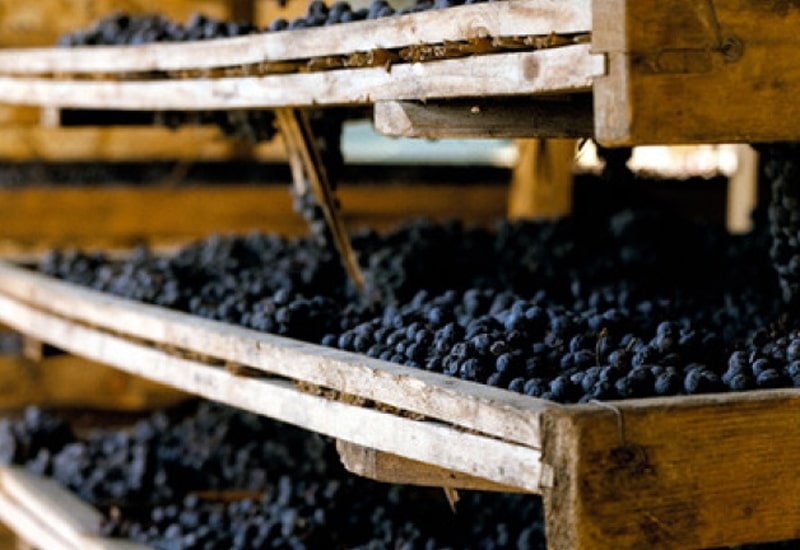
There are five distinct levels or tiers of Valpolicella wines. Amarone is classified as Level 4 among Valpolicella wines.
- Level 1: Valpolicella Classico DOC (11% - 12% ABV): This everyday red wine is made under the Valpolicella DOC of the Veneto region and is produced in large quantities. The grapes used to create this wine are all grown in the traditional Classico zone.
- Level 2: Valpolicella Superiore DOC (12% ABV): This red wine is aged for one year in wooden barrels. An Amarone producer may experiment with this versatile wine to bring out new exciting flavors. They use partially dried grapes or late-harvested grapes in their blend.
- Level 3: Valpolicella Superiore Ripasso DOC (14% ABV): Also called Ripasso della Valpolicella, this wine goes through two fermentation processes. The first is the usual fermentation with fresh grapes. Later on, it is mixed with Amarone grape skin and solids (known as Ripasso wines). The second fermentation process is what gives the wine its color, alcohol levels, and texture.
- Level 4: Amarone della Valpolicella DOCG (14% - 16% ABV): Amarone wine is made with grapes from Valpolicella that have been dried for 4-5 months. Drying the grapes removes the water and concentrates the sugars. The Amarone della Valpolicella DOCG wine is aged for 2-5 years before being released.
- Level 5: Recioto della Valpolicella DOCG (12% ABV): This is the perfect dessert wine! It is highly concentrated and made with the same grapes and process as Amarone. Instead, fermentation is stopped before completion to leave residual sugar in the wine.
Amarone Della Valpolicella Wine Styles
You can find three distinct styles of Amarone Della Valpolicella.
1. Normale

Amarone Normale needs to be aged for a minimum of two years in an oak barrel. This wine is meant to be opened ten years after its release.
2. Riserva

Amarone Riserva needs to be aged for a minimum of four years in French, American, or Slavonian oak.
Some wineries use Slavonian oak casks over French barriques, which are more gentle and allow for a longer lifespan and more prominent flavors.
The grapes used for Amarone Della Valpolicella Riserva are harvested in smaller batches and given some additional time to age. Amarone Riserva can age well for up to 20 years or more.
3. Recioto
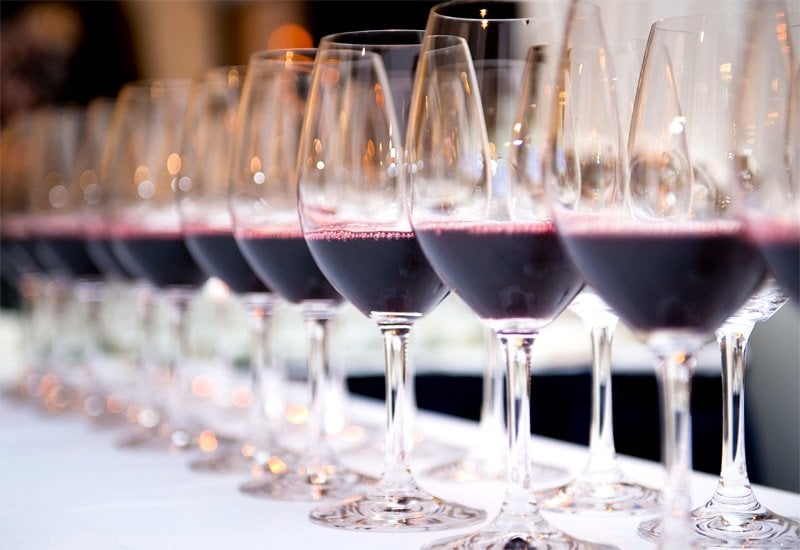
Recioto della Valpolicella wine is on the sweeter side, more concentrated, and longer-lived than Amarone wine.
To help you choose a bottle of Amarone, we’ve handpicked ten of the best ones!
10 Best Amarone Della Valpolicella Wines To Buy in 2023
Here are the most sought-after bottles of Amarone for you to try:
- 2013 Tommaso Bussola Amarone della Valpolicella Classico DOCG ($61)
- 1990 Giuseppe Quintarelli Amarone della Valpolicella Classico Riserva DOCG ($1674)
- 2001 Zyme La Mattonara ($510)
- 1998 Dal Forno Romano Vigneto Monte Lodoletta ($139)
- 2015 Tedeschi Marne 180 Amarone della Valpolicella DOCG ($47)
- 2007 Giuseppe Quintarelli Amarone della Valpolicella Classico DOCG ($387)
- 2008 Tommasi De-Bvris Amarone della Valpolicella Classico Riserva DOCG ($260)
- 2011 Tedeschi 'La Fabriseria' Valpolicella Classico Superiore ($22)
- 2011 Tedeschi Capitel Monte Olmi ($70)
- 2009 Masi Costasera Riserva Amarone della Valpolicella Classico DOCG ($67)
1. 2013 Tommaso Bussola Amarone della Valpolicella Classico DOCG ($61)
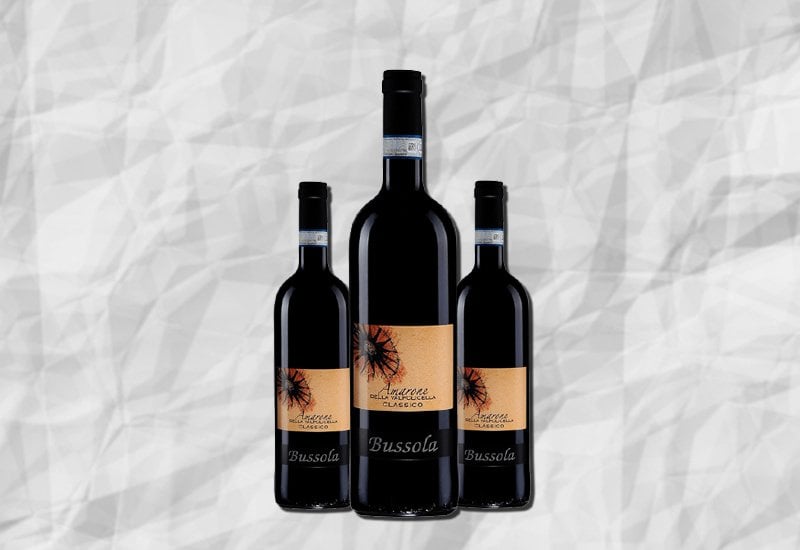
This wine has a deep ruby hue and has raisin, fig, and iron notes on the nose. The complex palate has notes of figs, dates, dried plum, leather, and balsamic eucalyptus. It also has a bright acidity that balances it all together perfectly!
2. 1990 Giuseppe Quintarelli Amarone della Valpolicella Classico Riserva DOCG ($1674)
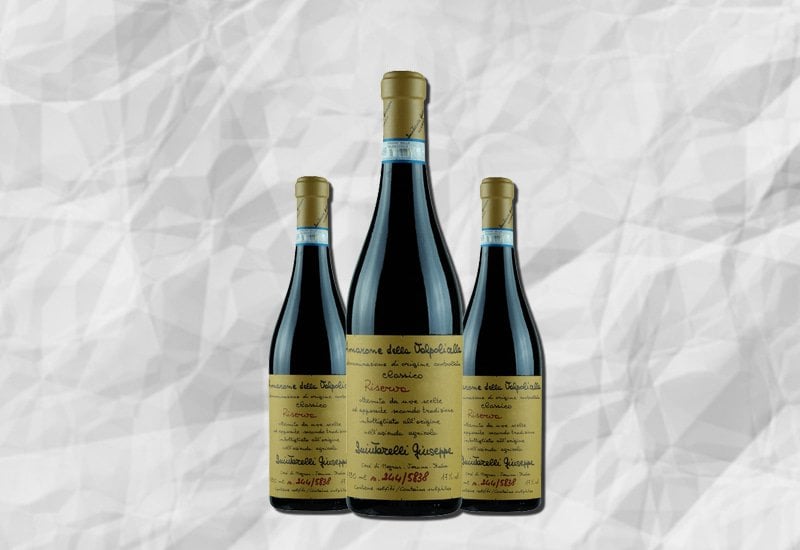
This vintage was originally labeled “Amarone della Valpolicella Classico Superiore Riserva”; however, it has been changed to “Riserva Centenario.”
Opening this bottle of Amarone will release aromas of sour cherry, vanilla, ripe fruit, and complex flower notes. This dry wine has fruity flavors of sweet young cherries, with strong tannins and an amazingly long finish when it comes to taste.
The acidity in this wine keeps the sweetness in check and lets you experience a perfectly balanced wine.
3. 2001 Zyme La Mattonara ($510)
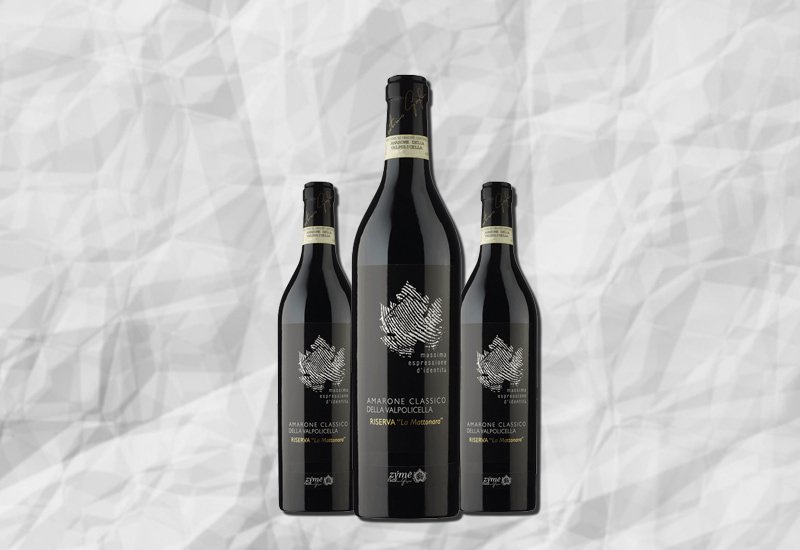
Corvina, Corvinone, Croatina, Oseleta, and Rondinella grapes are used to make this Amarone wine. These Amarone grapes were handpicked from the older vineyard in San Pietro in Cariano. Hence this wine was only made in limited quantities.
It has wine aromas of cherry preserves, cinnamon, tobacco leaf, spice, and whisky.
4. 1998 Dal Forno Romano Vigneto Monte Lodoletta ($139)
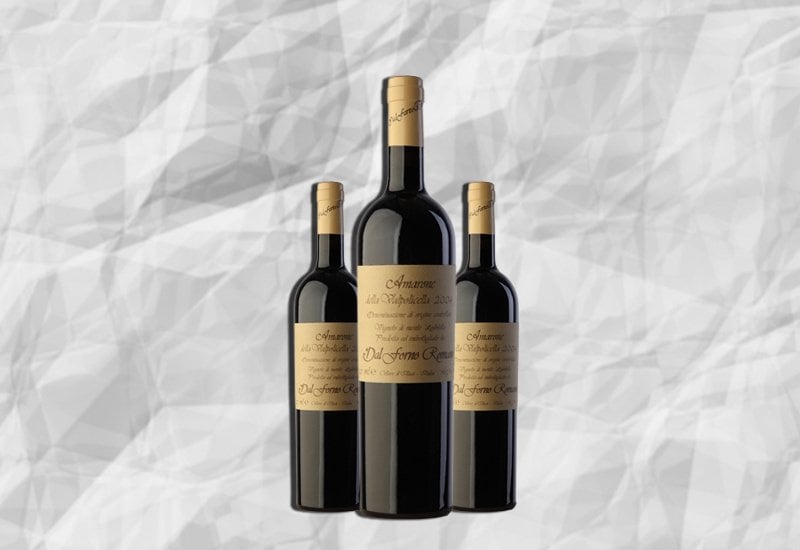
This pitch-black Amarone bursts with flavors and aromas, including dry fruit, espresso bean, exotic spice, mocha, raisin, and vanilla.
It is a full-bodied red wine with firm, refined tannins that carry you through to a long finish.
5. 2015 Tedeschi Marne 180 Amarone della Valpolicella DOCG ($47)
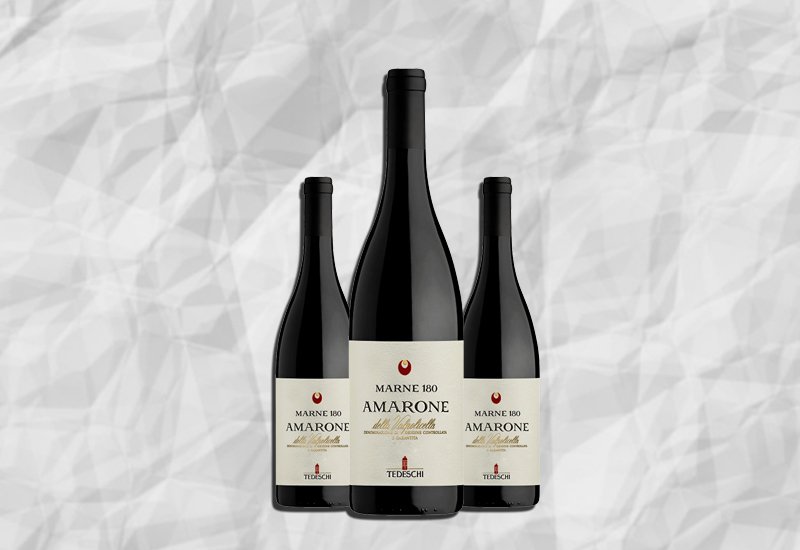
This bold, dark and inky wine has a perfumed nose of dark fruit and flowers, along with aromas of tar, spice, and rubber. It has a woody, spicy finish and is rich in texture.
6. 2007 Giuseppe Quintarelli Amarone della Valpolicella Classico DOCG ($387)
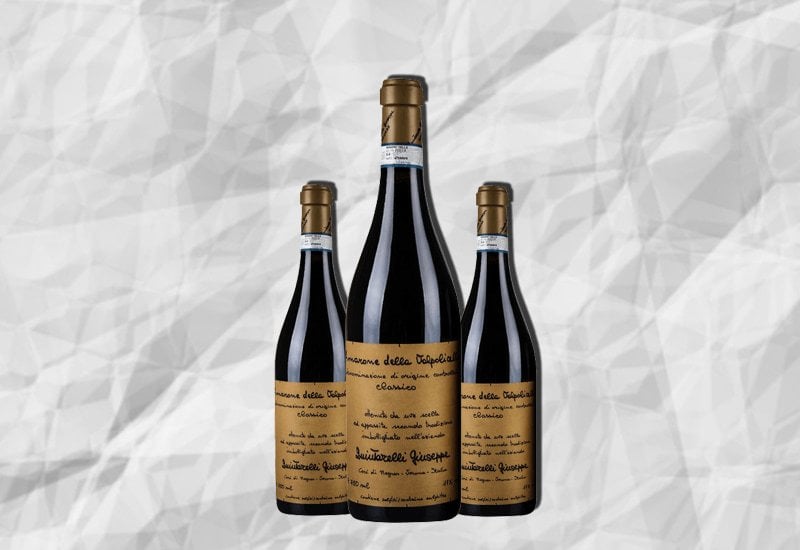
This Amarone wine is a bright red wine with an orange rim. While you sip on this silky-textured wine, you will notice a near-perfect balance between the acidity and the velvety tannins.
This wine’s flavor and aroma will remind you of aromatic herbs, crushed flowers, dried red cherry, liquorice, minerals, berry, and sweet spices.
7. 2008 Tommasi De-Bvris Amarone della Valpolicella Classico Riserva DOCG ($260)

This elegant Amarone opens on the nose with aromas of carob, dried fruit, liquorice candy, and leather.
This full-bodied Amarone has soft tannins that are fully resolved now with a harmonious and durable finish.
8. 2011 Tedeschi 'La Fabriseria' Valpolicella Classico Superiore ($22)
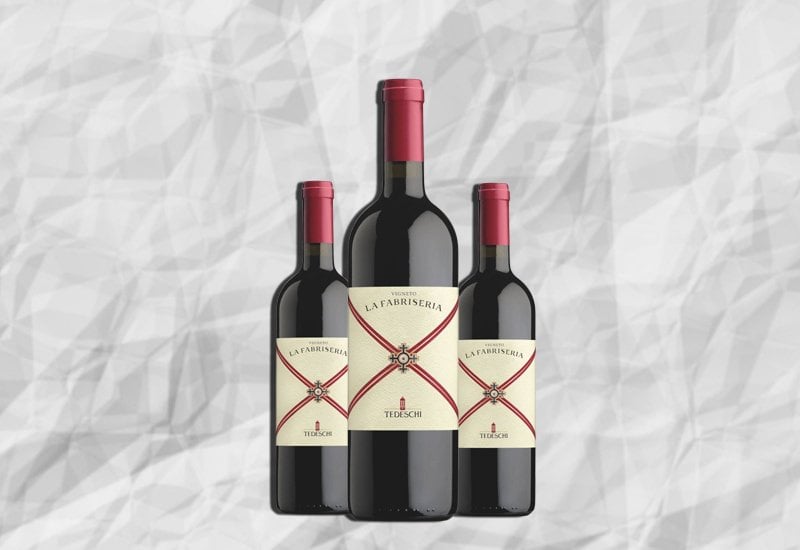
The 2011 Tedeschi La Fabriseria is a bright, deep ruby red wine. It has aromas of baking chocolate, black cherry, and clove.
This medium to full-bodied wine has an intense concentration, high acidity levels, and medium tannin levels. You can open this wine up now, but it will also be perfect in 10-12 years.
9. 2011 Tedeschi Capitel Monte Olmi ($70)
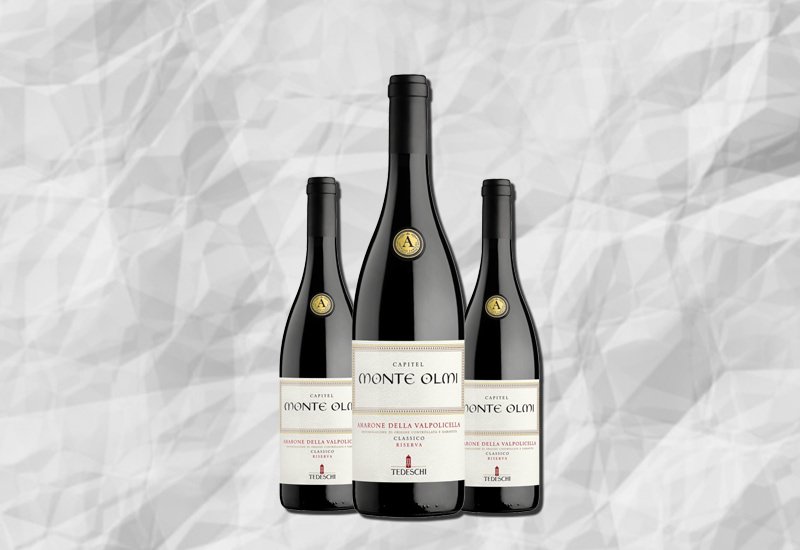
It has aromas of scorched earth, spices, and dark berries. The full-bodied palate has notes of licorice, prune, and raisins and a medium to long finish.
10. 2009 Masi Costasera Riserva Amarone della Valpolicella Classico DOCG ($67)
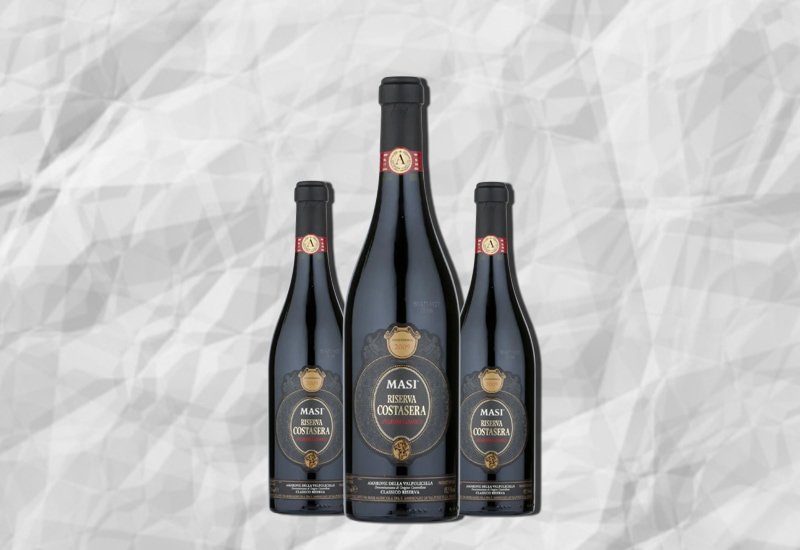
This bold wine has toasty notes of espresso, oak, chocolate, and plum cake and a nose of cigar and blackberries. It is ripe, rich, and full-bodied with an excellent acidity to round it off.
The Taste And Characteristics Of Amarone Wine
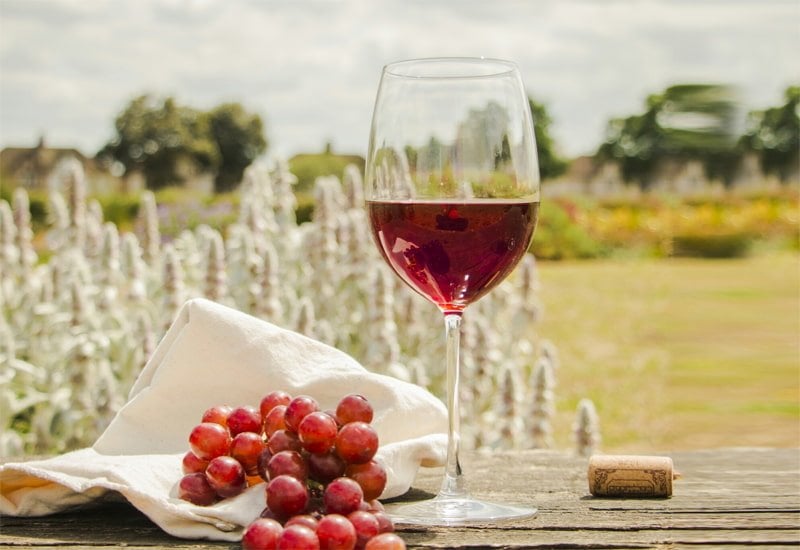
In general, you can expect high acidity and bold scents of black fig, cherry liqueur, black cherry, cinnamon, mature fruit, and plum sauce. There’ll also be notes of chocolate, crushed gravel dust, and green peppercorn on the palate.
The older Amarone wines offer more flavors of brown sugar, fig, and molasses.
This wine has a touch of natural residual sugar. This residual sugar complements the naturally high acid levels and adds to its boldness.
Amarone Wine Characteristics

- Body: Full-bodied red wine
- Tannins: Firm Tannins
- Alcohol by Volume (ABV): Minimum 14%, usually between 15% and 16%
- Residual Sugar: Maximum 0.9% for a 14% ABV, to about 1.2% for higher ABV.
- Acidity: High Acidity
Sip an Amarone wine in an oversized wine glass to collect all the delightful aromas. Serve young Amarone wines at room temperature and older wines at slightly cooler temperatures.
Grapes Used To Make Amarone Wine
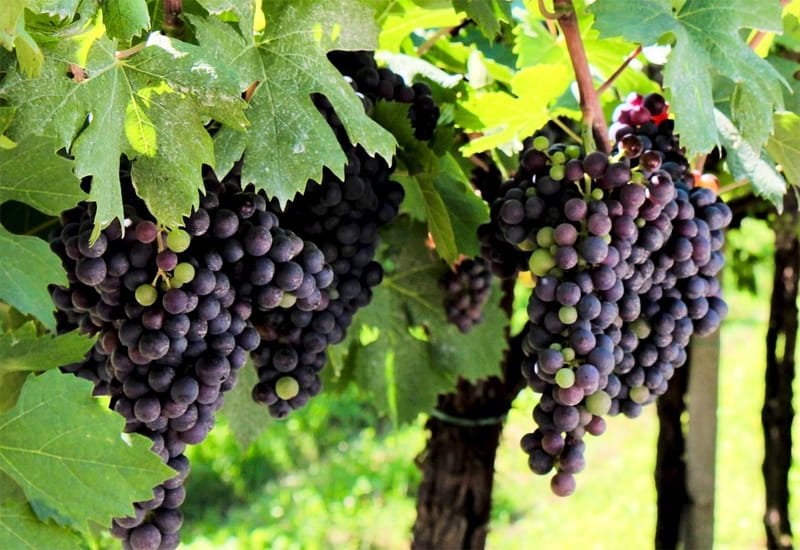
There are only 12,000 acres in the world where Corvinone and Corvina grapes are grown, and they are found in Valpolicella.
Initially only Corvina (Corvina Veronese),Corvinone, and Rondinella were used to make Amarone wines. But, of late, grapes like Molinara and Oseleta have been added to the mix in smaller quantities.
The Corvina grape adds to the aroma and flavors, while Corvinone contributes to Amarone wine's color, tannin level, and elegance.
Unique Winemaking Methods Used to Create Amarone Della Valpolicella
Wineries use the Appassimento winemaking methods to produce Amarone wine.
Appassimento is the original method used for the grape drying process. The dried-out grapes are then pressed and fermented.
With modern technology, however, two new styles have emerged that decide the taste and longevity of the wine.
1. Traditional Winemaking Method
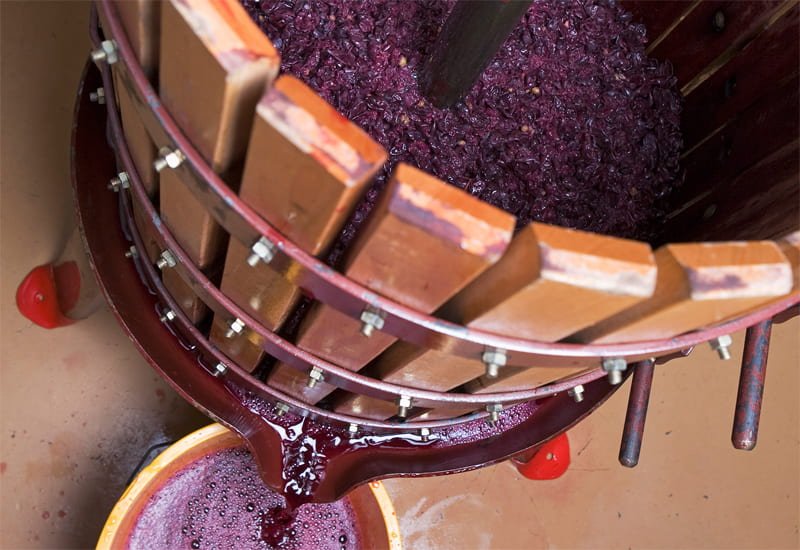
Wineries like Bertani and Quintarelli use the traditional method to dry the grapes and then ferment them in chestnut or oak barrels. In this method, producers use Corvina, Corvinone, and Rondinella grapes in their blend.
When made using this method, the Amarone della Valpolicella wine has high acidity levels giving it excellent aging potential.
This method brings out flavors of red cherry, cinnamon, and green peppercorn.
Amarone produced from traditional methods could easily last up to 40 years. When you open the bottle, decant the wine for a couple of hours before serving.
2. Modern Winemaking Method

Winemakers like Masi and Allegrini use the more modern approach of quickly drying the grapes in humidity and temperature-controlled rooms. They then age their Amarone wine in new oak barrels.
Amarone wines from this method are bolder on release because of the new oak aging. The new oak aging also adds flavors of cherry liqueur, dark chocolate, molasses, and vanilla.
Some wineries add a non-regional grape variety or two like Cabernet Sauvignon, Merlot, and Sangiovese grapes to the blend.
Some of the wines produced using this method only last 8 - 10 years, while others might last for 20 years or more.
What Makes Amarone Wine Expensive?

The high price tag for a bottle of Amarone is primarily due to its scarcity and the unique, time-consuming winemaking process.
When it comes to producing Valpolicella Classico, the grapes are harvested and immediately crushed and fermented. But, the grapes used to make Amarone wine go through a longer journey until it is a finished product.
- Most wineries select the more mature, finest bunches for this wine.
- The grape bunches are also left a bit longer on the productive vines to make sure they have fully ripened.
- It takes at least 120 days for the grapes to dry out and turn into raisins. During this time, around 30-40% of the juice and weight is lost.
- The grapes are then blended and slowly pressed and fermented. This slow process is what gives the Amarone wine an intense concentration and remarkably high sugar content. The resulting wine has a high alcohol content and a deeper color.
Valpolicella Regions Where Amarone Is Produced
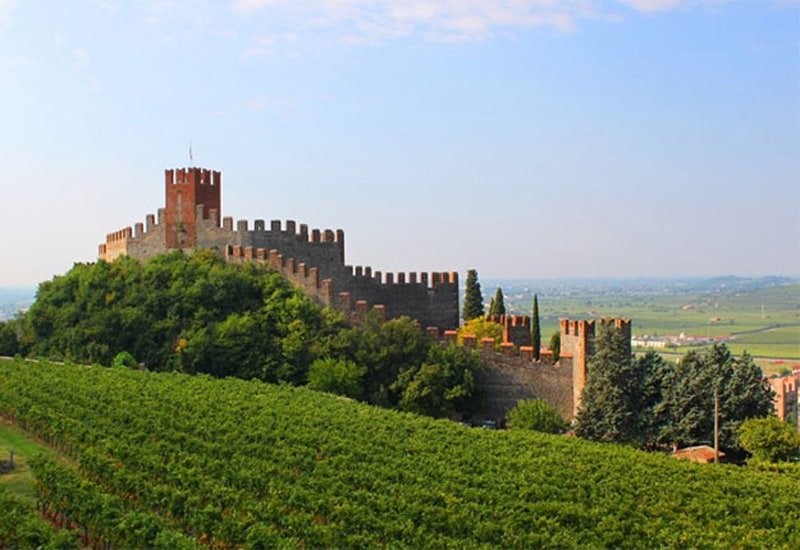
Amarone is made in three primary zones, Classico, Est, and Valpantena.
- Classico: The main valleys of Valpolicella Classico stretch out of the Lessini Mountains and are known as Valpolicella traditional wine-growing regions. Wines from this appellation are more aromatic, softer, and fruit-forward.
- Est: The Est (meaning East) region is next to Soave in the Valpolicella region. The Amarone wine produced is fresher, softer, and keeps its flavors longer.
- Valpantena: This wine region lies east of the Classico region. The wines from this area are like the Valpolicella Classico in style but offer more fruit flavors and herb aromas. The popular vineyards from the Valpantena region include Cerro Veronese and Verona.
A Brief History: How Amarone Della Valpolicella was Created by Accident

It is said that Amarone wine was created by accident in 1936 when Adelino Lucchese (the Villa Novare winemaker) was producing Recioto wine. While bottling the sweet dessert wine, he missed one of the barrels, and it continued to age.
He then called winemaker Gaetano Dall’Ora to taste the wine. To their surprise, the wine had not turned. Instead, it tasted better than either of them expected!
The wine had gained body, power, and structure without losing its original sweetness. The sugars were transformed into alcohol by fermenting longer in the barrel, creating a sweeter, richer wine.
Amarone Della Valpolicella was assigned its DOC classification in 1990. It was only in 2009 that Amarone and Recioto were both promoted to the classification of DOCG.
Now that you’ve discovered all there is to know about Amarone della Valpolicella, it is time to get a bottle of your own to enjoy.
A Red Wine To Hold Onto!
Amarone della Valpolicella is the perfect wine bottle to uncork on a special occasion or store in your wine cellar to sell later at a profit.
But, you should be able to do so without the hassles of buying, shipping, and storing the bottles.

Simply take advantage of Vinovest’s wine investment platform to build your portfolio of Amarone della Valpolicella and other highly-valued wines now.
